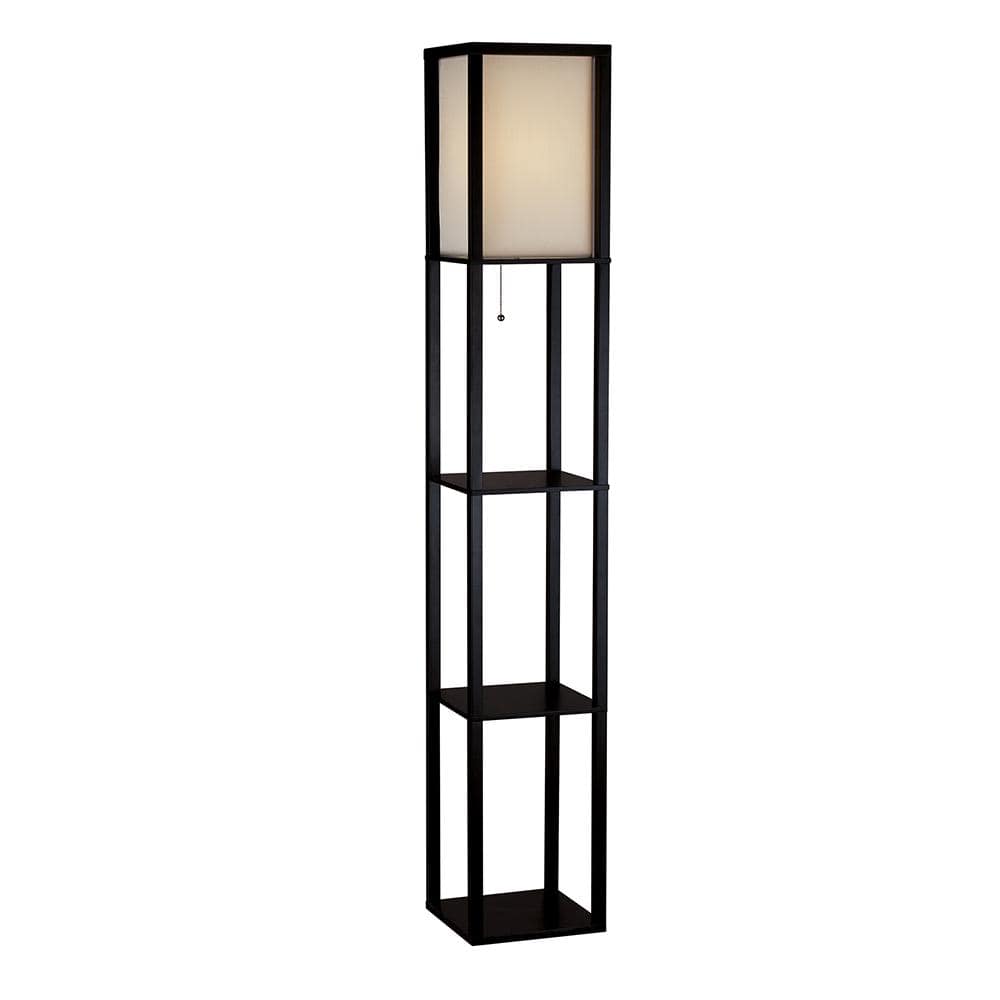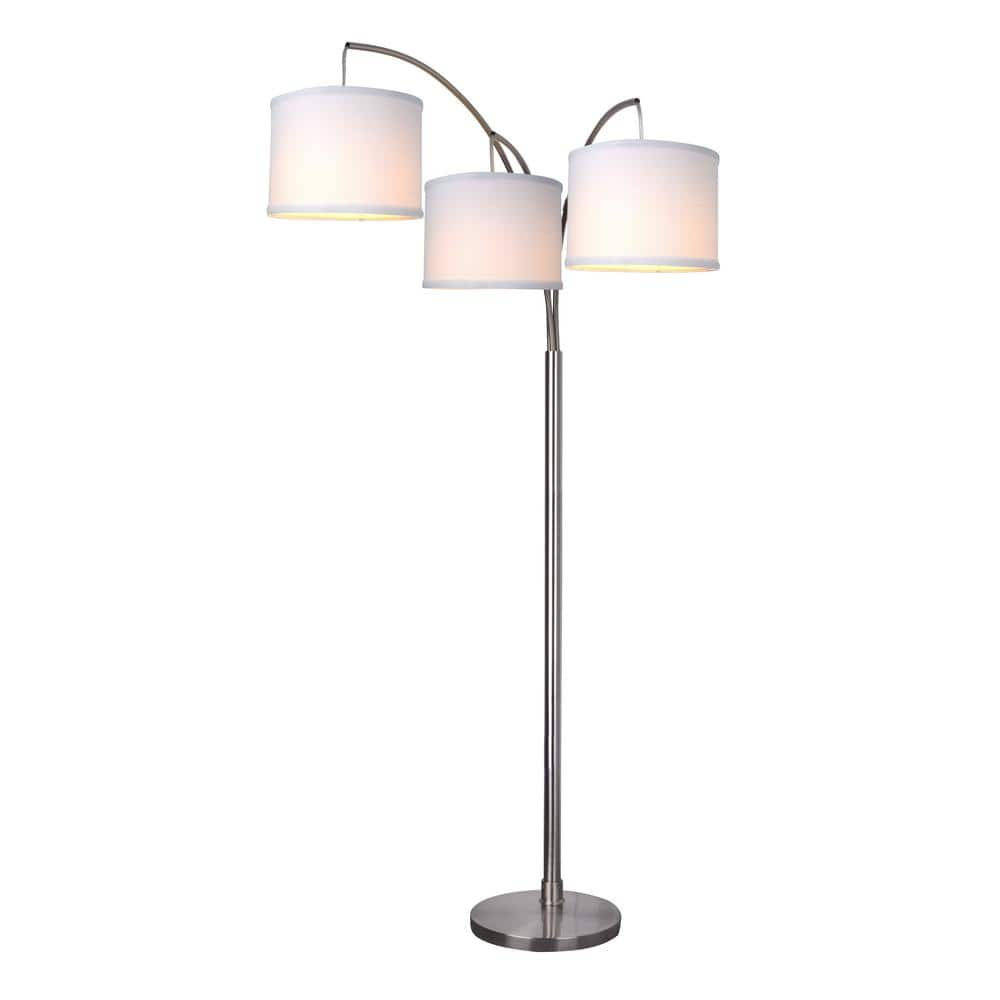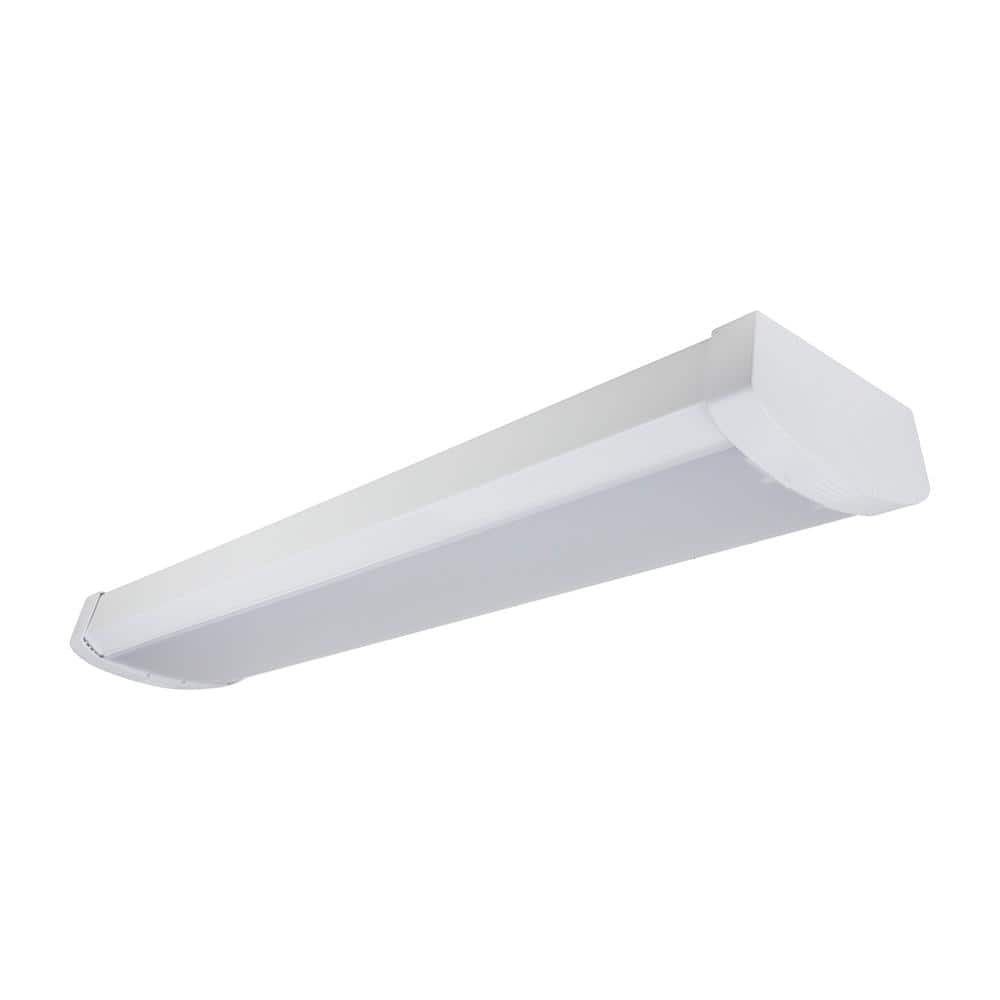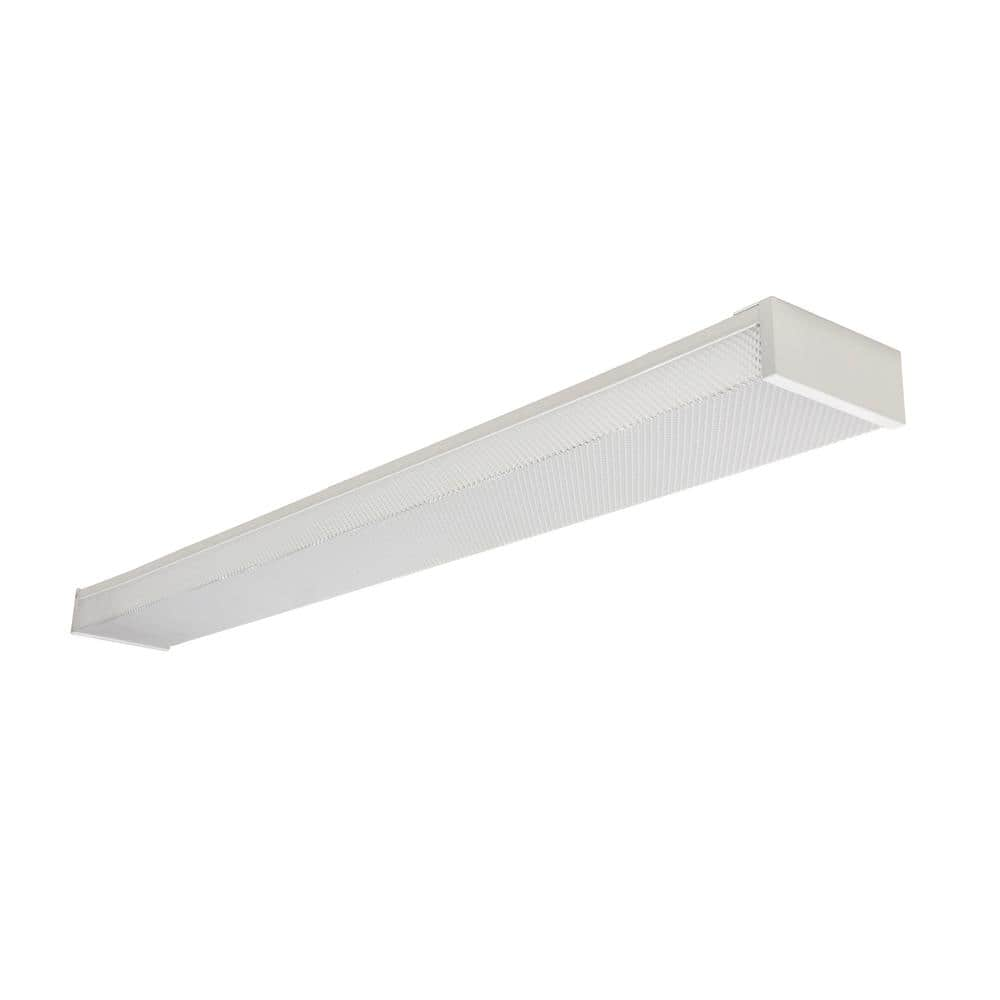Home Decorators Collection Palm Cove 52 in. Indoor/Outdoor LED Natural Iron Ceiling Fan with Light Kit, Downrod and Reversible Motor
Wet rated for use in any outdoor setting. QuickInstall blades snap into place for easy installation. Can be installed without the light kit, LED bulbs included.
Add a touch of the tropics to your indoor or outdoor oasis with the Palm Cove 52 in. Natural Iron Ceiling Fan from Home Decorators Collection. This outdoor rated fan features large palm leaf shaped teak finished blades that beautifully complement the natural iron motor housing and matte opal glass bowl 2-light kit. The tri-mount installation system allows for a variety of mounting options from close-to-ceiling mounting to extended downrod hanging for high or angled ceilings. Made for the outdoors but suitable for indoor installations as well, this fan installs in minutes with incorporated technologies, including QuickInstall Blades and Accu-Arm blade brackets. The Palm Cove features Quiet Motor Technology Plus for maximum air flow with minimal noise.
- 5 ABS weatherproof palm leaf shaped fan blades in teak finish
- Natural iron finish
- Includes matte opal glass bowl light fixture
- Pull chain operation
- Quiet motor with maximum airflow
- 4.5 in. threaded downrod included for increased stability
- Tri-mount installation system (close-to-ceiling, standard, angled ceiling mount)
- Outdoor and indoor use; large spaces
- QuickInstall fan blades and AccuArm blade brackets
- Includes: downrod, light kit
- Lifetime motor warranty
- QuickInstall blades – QuickFit installs 25% Faster compared to traditional fans
- Can be installed without the light kit
- Finishes shown are representative of the item. Actual finish may vary slightly.
Additional information
| Dimensions | H 19.5 in, W 52 in, D 52 in |
|---|---|
| Downrod Length (in.) | 4.5 |
| Fan Blade Length (In.) | 21.19 |
| Fan Blade Span (in.) | 52 |
| Fan Blade Width (In.) | 10.32 |
| Manufacturer Warranty | Lifetime Motor Warranty |
52 may refer to:
- 52 (number)
- one of the years 52 BC, AD 52, 1952, 2052
- 52-hertz whale an individual male whale, also known as the loneliest whale, calling at the unusual 52 hertz range
- 52 (comics), a 2006–07 American weekly comic book series
- 52 (album series), series of albums by American singer Kristian Bush
- 52 Europa, a main-belt asteroid
- Tatra 52, a mid-size car
A ceiling is an overhead interior roof that covers the upper limits of a room. It is not generally considered a structural element, but a finished surface concealing the underside of the roof structure or the floor of a story above. Ceilings can be decorated to taste, and there are many examples of frescoes and artwork on ceilings, especially within religious buildings. A ceiling can also be the upper limit of a tunnel.
The most common type of ceiling is the dropped ceiling, which is suspended from structural elements above. Panels of drywall are fastened either directly to the ceiling joists or to a few layers of moisture-proof plywood which are then attached to the joists. Pipework or ducts can be run in the gap above the ceiling, and insulation and fireproofing material can be placed here. Alternatively, ceilings may be spray painted instead, leaving the pipework and ducts exposed but painted, and using spray foam.
A subset of the dropped ceiling is the suspended ceiling, wherein a network of aluminum struts, as opposed to drywall, are attached to the joists, forming a series of rectangular spaces. Individual pieces of cardboard are then placed inside the bottom of those spaces so that the outer side of the cardboard, interspersed with aluminum rails, is seen as the ceiling from below. This makes it relatively easy to repair the pipes and insulation behind the ceiling, since all that is necessary is to lift off the cardboard, rather than digging through the drywall and then replacing it.
Other types of ceiling include the cathedral ceiling, the concave or barrel-shaped ceiling, the stretched ceiling and the coffered ceiling. Coving often links the ceiling to the surrounding walls. Ceilings can play a part in reducing fire hazard, and a system is available for rating the fire resistance of dropped ceilings.
Collection or Collections may refer to:
- Cash collection, the function of an accounts receivable department
- Collection (church), money donated by the congregation during a church service
- Collection agency, agency to collect cash
- Collections management (museum)
- Collection (museum), objects in a particular field forms the core basis for the museum
- Fonds in archives
- Private collection, sometimes just called "collection"
- Collection (Oxford colleges), a beginning-of-term exam or Principal's Collections
- Collection (horse), a horse carrying more weight on his hindquarters than his forehand
- Collection (racehorse), an Irish-bred, Hong Kong–based Thoroughbred racehorse
- Collection (publishing), a gathering of books under the same title at the same publisher
- Scientific collection, any systematic collection of objects for scientific study
Collection may also refer to:
A cove is a small bay or coastal inlet. They usually have narrow, restricted entrances, are often circular or oval, and are often situated within a larger bay. Small, narrow, sheltered bays, inlets, creeks, or recesses in a coast are often considered coves.
Colloquially, the term can be used to describe a sheltered bay. Geomorphology describes coves as precipitously walled and rounded cirque-like openings like a valley extending into or down a mountainside, or in a hollow or nook of a cliff or steep mountainside. A cove can also refer to a corner, nook, or cranny, either in a river, road, or wall, especially where the wall meets the floor.
An example is Lulworth Cove on the Jurassic Coast in Dorset, England. To its west, a second cove, Stair Hole, is forming.
Fan commonly refers to:
- Fan (machine), a machine for producing airflow, often used for cooling
- Hand fan, an implement held and waved by hand to move air for cooling
- Fan (person), short for fanatic; an enthusiast or supporter, especially with regard to entertainment
Fan, FAN or fans may also refer to:
A home, or domicile, is a space used as a permanent or semi-permanent residence for one or more human occupants, and sometimes various companion animals. It is a fully- or semi-sheltered space and can have both interior and exterior aspects to it. Homes provide sheltered spaces, for instance rooms, where domestic activity can be performed such as sleeping, preparing food, eating and hygiene as well as providing spaces for work and leisure such as remote working, studying and playing.
Physical forms of homes can be static such as a house or an apartment, mobile such as a houseboat, trailer or yurt or digital such as virtual space. The aspect of 'home' can be considered across scales; from the micro scale showcasing the most intimate spaces of the individual dwelling and direct surrounding area to the macro scale of the geographic area such as town, village, city, country or planet.
The concept of 'home' has been researched and theorized across disciplines – topics ranging from the idea of home, the interior, the psyche, liminal space, contested space to gender and politics. The home as a concept expands beyond residence as contemporary lifestyles and technological advances redefine the way the global population lives and works. The concept and experience encompasses the likes of exile, yearning, belonging, homesickness and homelessness.
Indoor(s) may refer to:
- the interior of a building
- Indoor environment, in building science, traditionally includes the study of indoor thermal environment, indoor acoustic environment, indoor light environment, and indoor air quality
- Built environment, the human-made environment that provides the setting for human activity
- Indoor athletics
- indoor games and sports
Iron is a chemical element; it has the symbol Fe (from Latin ferrum 'iron') and atomic number 26. It is a metal that belongs to the first transition series and group 8 of the periodic table. It is, by mass, the most common element on Earth, forming much of Earth's outer and inner core. It is the fourth most abundant element in the Earth's crust, being mainly deposited by meteorites in its metallic state.
Extracting usable metal from iron ores requires kilns or furnaces capable of reaching 1,500 °C (2,730 °F), about 500 °C (932 °F) higher than that required to smelt copper. Humans started to master that process in Eurasia during the 2nd millennium BC and the use of iron tools and weapons began to displace copper alloys – in some regions, only around 1200 BC. That event is considered the transition from the Bronze Age to the Iron Age. In the modern world, iron alloys, such as steel, stainless steel, cast iron and special steels, are by far the most common industrial metals, due to their mechanical properties and low cost. The iron and steel industry is thus very important economically, and iron is the cheapest metal, with a price of a few dollars per kilogram or pound.
Pristine and smooth pure iron surfaces are a mirror-like silvery-gray. Iron reacts readily with oxygen and water to produce brown-to-black hydrated iron oxides, commonly known as rust. Unlike the oxides of some other metals that form passivating layers, rust occupies more volume than the metal and thus flakes off, exposing more fresh surfaces for corrosion. Chemically, the most common oxidation states of iron are iron(II) and iron(III). Iron shares many properties of other transition metals, including the other group 8 elements, ruthenium and osmium. Iron forms compounds in a wide range of oxidation states, −4 to +7. Iron also forms many coordination compounds; some of them, such as ferrocene, ferrioxalate, and Prussian blue have substantial industrial, medical, or research applications.
The body of an adult human contains about 4 grams (0.005% body weight) of iron, mostly in hemoglobin and myoglobin. These two proteins play essential roles in oxygen transport by blood and oxygen storage in muscles. To maintain the necessary levels, human iron metabolism requires a minimum of iron in the diet. Iron is also the metal at the active site of many important redox enzymes dealing with cellular respiration and oxidation and reduction in plants and animals.
Light, visible light, or visible radiation is electromagnetic radiation that can be perceived by the human eye. Visible light spans the visible spectrum and is usually defined as having wavelengths in the range of 400–700 nanometres (nm), corresponding to frequencies of 750–420 terahertz. The visible band sits adjacent to the infrared (with longer wavelengths and lower frequencies) and the ultraviolet (with shorter wavelengths and higher frequencies), called collectively optical radiation.
In physics, the term "light" may refer more broadly to electromagnetic radiation of any wavelength, whether visible or not. In this sense, gamma rays, X-rays, microwaves and radio waves are also light. The primary properties of light are intensity, propagation direction, frequency or wavelength spectrum, and polarization. Its speed in vacuum, 299792458 m/s, is one of the fundamental constants of nature. Like all types of electromagnetic radiation, visible light propagates by massless elementary particles called photons that represents the quanta of electromagnetic field, and can be analyzed as both waves and particles. The study of light, known as optics, is an important research area in modern physics.
The main source of natural light on Earth is the Sun. Historically, another important source of light for humans has been fire, from ancient campfires to modern kerosene lamps. With the development of electric lights and power systems, electric lighting has effectively replaced firelight.
Outdoor(s) may refer to:
- Wilderness
- Natural environment
- Outdoor cooking
- Outdoor education
- Outdoor equipment
- Outdoor fitness
- Outdoor literature
- Outdoor recreation
- Outdoor Channel, an American pay television channel focused on the outdoors
Palm most commonly refers to:
- Palm of the hand, the central region of the front of the hand
- Palm plants, of family Arecaceae
- List of Arecaceae genera
- Several other plants known as "palm"
Palm or Palms may also refer to:
With or WITH may refer to:
- With, a preposition in English
- Carl Johannes With (1877–1923), Danish doctor and arachnologist
- With (character), a character in D. N. Angel
- With (novel), a novel by Donald Harrington
- With (album), a 2014 album by TVXQ
- With (EP), a 2021 EP by Nam Woo-hyun






by Edward
Bought a discounted fan. Staff was very knowledgeable. Great service.
by Kathy
Great fans. I bought 2. One for my living room and 1 for my bedroom. They are handsome fans and I am very happy. I have 4 more to replace when I have the cash.
by Diane
Love them! They were easy to install.
by Maria
I really like it , I install in my sunroom and it looks amazing 100% recommended.